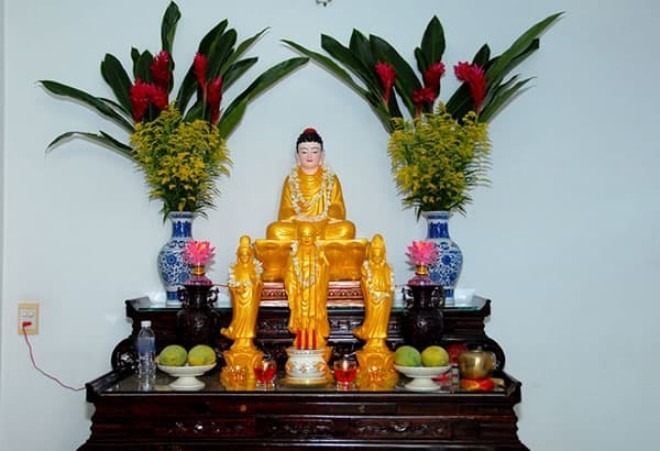Flowers play a significant role in Vietnamese culture, especially during special occasions and rituals. On the 1st and 15th days of the lunar month, as well as during festivals, anniversaries, and important events, flowers are an essential part of the offerings on the ancestral altar.
Fresh flowers not only bring vitality and capture the essence of nature, but they also add a sense of tranquility and solemnity to the worship space. Placing a flower vase on the altar is believed to create a fragrant atmosphere and invite blessings from ancestors and deities for the family and descendants.
Why do wealthy families usually place a flower vase on the left side of the altar when offering incense?
Wealthy families tend to pay close attention to worship and rituals, believing that proper arrangement of the altar according to feng shui principles shows respect to their ancestors and brings good fortune to the family.
When placing just one flower vase on the altar, it is typically positioned on the left side. This follows the principle of “east for vase, west for fruit,” meaning the flower vase should be placed in the eastern direction, while the fruit plate is placed in the west.

The flower vase is usually placed on the left side of the altar, following the principle of “east for vase, west for fruit.”
According to natural laws, the sun rises in the east and sets in the west, and flowers bloom before fruits appear. Therefore, placing the flower vase in the east aligns with natural laws, bringing smoothness and ease to all matters.
Additionally, if the altar faces the main door in a southern direction, placing the flower vase on the left (east) allows the fragrance of the flowers to permeate the space when the east or southeast wind blows, creating a more serene and solemn worship atmosphere.
Arranging the altar with two flower vases
When using two flower vases on the altar, they should be placed symmetrically on both sides, with the fruit plate in the center, in front of the incense burner. This arrangement not only makes the altar more complete and cozy but also retains the solemnity associated with the flower vases.
Apart from the flower vases, the host should also pay attention to other worship items such as the three (or five) ceremonial objects, the ceremonial tray, and the incense holder to create a more dignified and warm worship space.

Symmetrical arrangement of two flower vases on the altar, with the fruit plate in the center.
For smaller altars, such as those hung on walls, consider placing a single flower vase with the incense holder on the opposite side. Avoid overcrowding the altar with too many flower vases, as this may create an unbalanced space in relation to the other worship items.
When choosing a flower vase for the altar, opt for materials such as ceramic, porcelain, or glass, and avoid using copper or iron. The flowers should have a gentle fragrance, be free of thorns, and be neatly trimmed to ensure both safety and the preservation of the spiritual value of the flower vase.






































